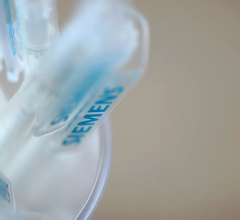
As part of U.S. healthcare reform efforts, starting Jan. 1, 2018, physicians will be required to document they are following appropriate use criteria (AUC) for outpatient medical imaging orders by using clinical decision support (CDS) software documentation. The software must be certified by the Centers for Medicare and Medicaid Services (CMS) in order to receive full reimbursement for diagnostic imaging services for Medicare and Medicaid patients. This will affect advanced outpatient imaging for computed tomography (CT), magnetic resonance imaging (MRI) and nuclear imaging (PET and SPECT).
The requirement for CDS was included in the final Stage 3 Meaningful Use guidelines for electronic health records (EHRs) and was supposed to go into effect Jan. 1, 2017. However, this was delayed because there were no federal guidelines written for EHR software vendors to follow in developing CDS software. This was finally provided in November 2016 (link at www.gpo.gov/fdsys/pkg/FR-2016-11-15/pdf/2016-26668.pdf - key AUC sections on pages 80403 and 80536). Information technology (IT) vendors told CMS it would take at least a year to create and implement AUC CDS software after the federal government set these standards.
CMS uses the technical term CDS support mechanisms (CDSM) for these AUC software tools. A CDSM needs to be an interactive, electronic tool for use by clinicians that communicates AUC information to the user and assists them in making the most appropriate treatment decision for a patient’s specific clinical condition. Tools may be modules within, or available through, a certified EHR software platform.
The goal of the new regulation is to ensure expensive advanced imaging exams are actually appropriate for the patient's condition to help reduce healthcare costs. CMS also hopes this will reduce the number of additional imaging studies sometimes ordered because the most appropriate exam was not ordered first.
Watch the VIDEO "Clinical Decision Support Requirements for Cardiac Imaging," a discussion with Rami Doukky, M.D., system chair, Division of Cardiology, professor of medicine, Cook County Health and Hospitals System, Chicago, discusses the new CMS requirements for clinical decision support (CDS) appropriate use criteria (AUC) documentation in cardiac imaging starting on Jan. 1, 2018. He spoke at the 2017 American Society of Nuclear Cardiology (ASNC) Today meeting.
Timeline for AUC CDS Implementation
Starting on Jan. 1, 2018, CMS billing for medical imaging that does not have AUC software consultation documentation will be denied.
While the AUC requirement was supposed to begin Jan. 1, 2017, since CMS did not release final guidelines for what will be required and how the software should function until last November, software vendors were given until March 1, 2017, to submit applications to CMS to be certified. A final list of certified vendors will be available July 1, 2017. Vendors that are not given full approval because they do not meet all the requirements may be given a preliminary qualification status in July and will need to ensure their software meets all the CMS requirements by Jan. 1, 2018.
“If you wait until July to see which software vendors are going to qualify, that only allows a hospital six months to purchase and install a system,” said Steve Herman, M.D., a thoracic radiologist and the founder and CMO of the CDS company MedCurrent. He explained this is a relatively short time frame and could be grounds for CMS to move the start date for denying claims until the summer of 2018. However, as of now, CMS has stated the deadline is Jan. 1, he said.
“Many hundreds of hospitals have purchased these systems, but thousands of hospitals have not installed anything yet,” Herman explained. “Radiologists need to be concerned because they need to ensure their ordering doctors are sending orders through a CDS system, otherwise they might not get paid.”
Herman said the implementation of CDS software needs to include a change management component. This includes getting buy-in from the physicians, engaging them on how to use it and addressing their concerns. One thing that he said is very helpful is to find a physician champion who sees value in AUC CDS who can become an advocate with their peers.
“In general, doctors don’t like change. But, we have not seen a lot of backlash to implementing these systems from our business,” Herman said. “Most physicians see this as a quality assurance tool.”
Physicians are busy, so Herman’s recommendation is to choose CDS software that minimizes the time required to use it and fits well within their existing workflow.
CDS integrates into computerized physician order entry (CPOE) systems where the imaging orders are placed. That way, when an order is entered — usually with the aid of drop down, multiple-choice menus — the software can review the parameters entered and determine if the order matches AUC.
Claims and Reporting Requirements
CMS has set Nov. 1, 2017, as the deadline for the release of what will be required from healthcare providers to file claims and what AUC documentation is needed in order to receive full CMS reimbursement. This will allow two months for implementation of these reporting requirements for billing submissions to CMS starting Jan. 1, 2018.
Starting Jan. 1, 2020, physicians that CMS identifies as outliers because of their imaging exams not meeting AUC will need to obtain prior authorizations before their patients can be scanned.
Who Will Set AUC
CMS established an evidence-based process and transparency requirements for the development of AUC. The AUC for specific subspecialties will be defined by provider-led entities (PLEs), such as specialty medical imaging societies. Top hospitals that are considered thought leaders in medicine can also apply for PLE status.
CMS has established a process by which PLEs may become qualified to develop, modify or endorse AUC. The first list of qualified PLEs were posted on the CMS website in the summer of 2016, at which time their AUC libraries became specified for purposes of CDS software.
The first list of 11 PLEs included:
• American College of Cardiology (ACC);
• American College of Radiology (ACR);
• Brigham and Women's Physicians Organization;
• CDI Quality Institute;
• Intermountain Healthcare;
• Massachusetts General Hospital, Department of Radiology;
• National Comprehensive Cancer Network;
• Society for Nuclear Medicine and Molecular Imaging (SNMMI);
• University of California Medical Campuses;
• University of Washington Physicians; and
• Weill Cornell Medicine Physicians Organization.
Additional organizations and hospitals applied for PLE status Jan. 1, 2017, and those approved will be announced July 1, 2017.
CMS Sets High-priority Clinical Areas
There are several priority clinical areas where CMS wants to implement CDS software in order to reduce the number of unnecessary and/or expensive imaging exams. These priorities include:
• Coronary artery disease (suspected or diagnosed);
• Suspected pulmonary embolism;
• Headache (traumatic and nontraumatic);
• Hip pain;
• Low back pain;
• Shoulder pain (to include suspected rotator cuff injury);
• Cancer of the lung (primary or metastatic, suspected or diagnosed); and
• Cervical or neck pain.
CMS Requirements for CDSMs
Qualified CDSMs must adhere to the the following CMS requirements:
1. Make available specified applicable AUC and its related supporting documentation for the imaging service ordered.
2. Identify the appropriate use criterion consulted if the CDSM makes available more than one criterion relevant to a consultation for a patient’s specific clinical scenario.
3. Make available, at a minimum, specified applicable AUC that reasonably address common and important clinical scenarios within all priority clinical areas identified by CMS.
4. Be able to incorporate specified applicable AUC from more than one qualified PLE.
5. Determine for each consultation the extent to which the applicable imaging service is consistent with specified applicable AUC. Or, it can have a determination of “not applicable” when the mechanism does not contain a criterion applicable to that patient’s specific clinical scenario.
6. Generate and provide a certification or documentation at the time of order that documents which qualified CDSM was consulted; the name and national provider identifier (NPI) of the ordering professional that consulted the CDSM; whether the service ordered would adhere to specified applicable AUC; whether the service ordered would not adhere to specified applicable AUC; or whether the specified applicable AUC consulted was not applicable to the service ordered.
7. Certification or documentation must be generated each time an ordering professional consults a qualified CDSM.
8. This must include a unique consultation identifier generated by the CDSM.
9. Make available updated AUC content within 12 months from the date the qualified PLE updates AUC.
10. A protocol must be in place to expeditiously remove AUC determined by the qualified PLE to be potentially dangerous to patients and/or harmful if followed.
11. Specified applicable AUC that reasonably address common and important clinical scenarios within any new priority clinical area must be made available for consultation through the qualified CDSM within 12 months of the priority clinical area being finalized by CMS.
12. Meet privacy and security standards under applicable provisions of law.
13. Provide to the ordering professional aggregate feedback regarding their consultations with specified applicable AUC in the form of an electronic report on at least an annual basis.
14. Maintain electronic storage of clinical, administrative and demographic information of each unique consultation for a minimum of six years.
15. Notify ordering professionals upon de-qualification.
Exceptions to the CDS requirement include imaging orders made by ordering professionals for emergency services, for an inpatient and for which payment is made under Medicare Part A, and ordering professionals who are granted a significant hardship exception to the Medicare EHR Incentive Program payment adjustment for that year.
Deadlines for CDS Software Developers
CMS gave software developers a deadline of March 1, 2017 to submit applications to have their CDS software tools certified for use in 2017. New software CDSM applications may be submitted no later than Jan. 1 of each year to be reviewed for certification. So CDS vendors who did not meet the March 2017 deadline will need to submit their applications to CMS no later than Jan. 1 to be considered for qualification in 2018.
Applications that do not document current adherence to each qualified CDSM requirement, but that document how and when each requirement is reasonably expected to be met, will receive preliminary qualification. A preliminary qualification period begins June 30, 2017 to show CMS that the software adheres to each requirement.
Once a CDSM is qualified, it will be certified for five years, at which time it will need to be recertified by CMS. If a qualified CDSM is found non-adherent to the requirements, CMS may terminate its qualified status or may consider this information during requalification.
All qualified CDSMs will be specified on a list on the CMS website by June 30 of each year.
Related Content of AUC and CDS:
Watch the VIDEO “Examples of Clinical Decision Support for Cardiology and Radiology.”
Read about “How Artificial Intelligence Will Change Medical Imaging” and aid in AUC review.
Read the 2016 article “Federal Requirements for Clinical Decision Support for Imaging.”
Read about what is required in "Proposed Rules for Stage 3 Meaningful Use."




 November 14, 2025
November 14, 2025 









